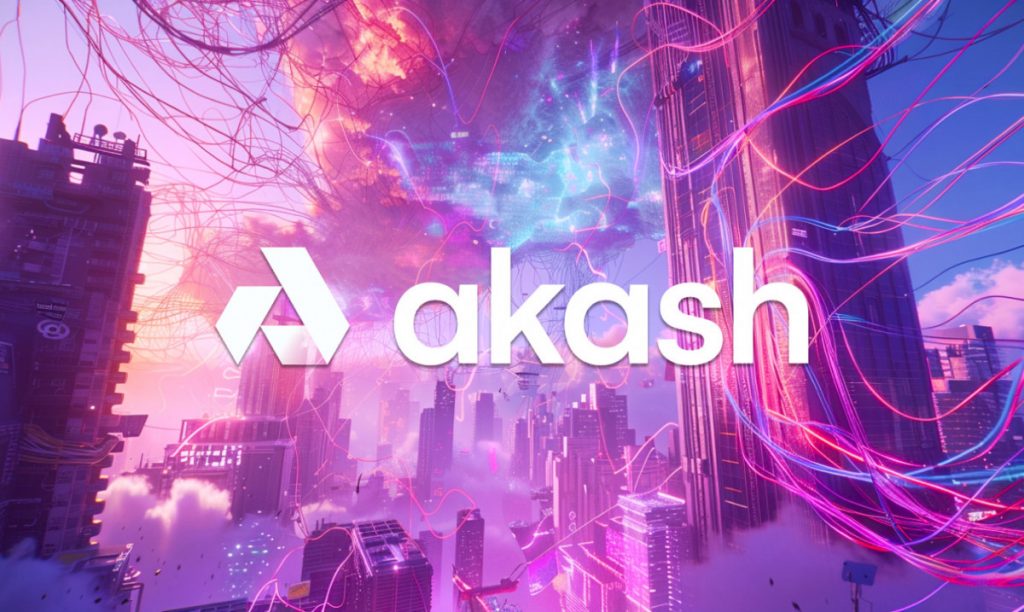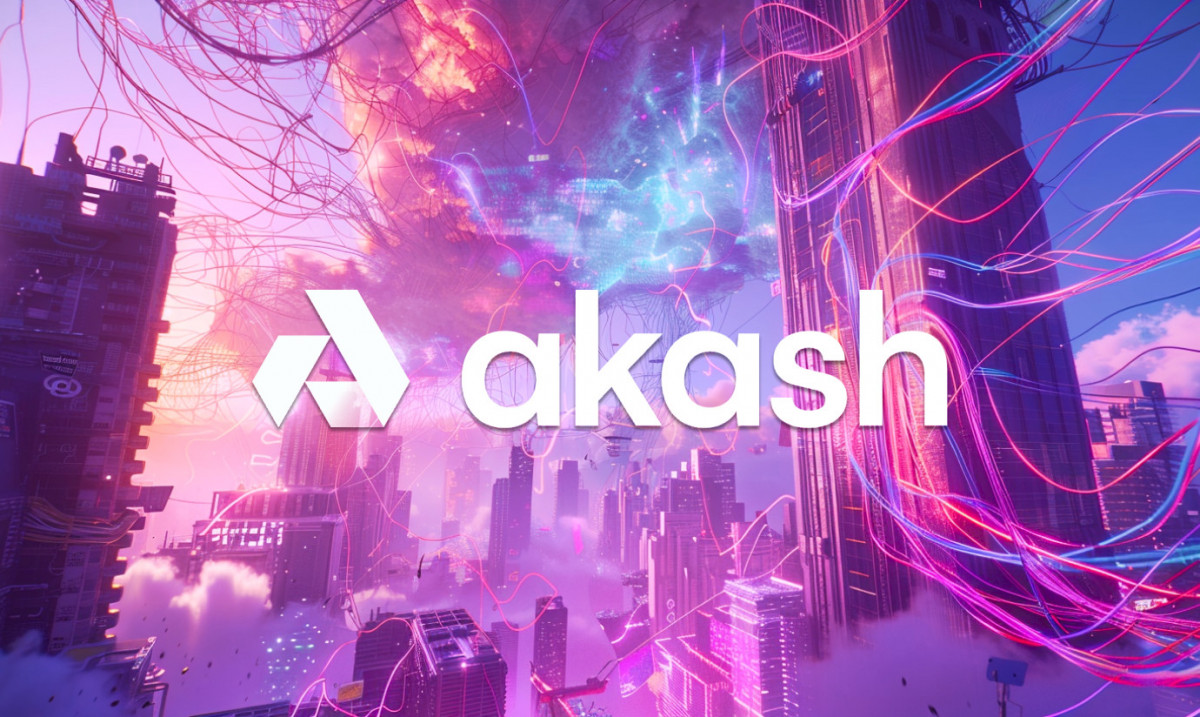
Posted: March 13, 2024 1:21 PM Updated: March 13, 2024 2:14 PM

Correction and fact check date: March 13, 2024, 1:21 p.m.
briefly
Akash Network CEO Greg Osuri shared his vision for the GPU incentive program and how the company is easing cloud computing access to Web3.

A series of Nvidia chips are now accessible on Akash Network, a cloud computing platform built on blockchain. By providing access to idle chips within this peer-to-peer marketplace, Akash Network now offers access to Nvidia H100s and A6000s GPUs via the cloud at competitive pricing compared to other cloud service providers.
This is consistent with Akash Network’s efforts to address growing demand and marks the launch of an incentive pilot program that includes a $5 million investment to give developers access to high-performance GPUs.
In a conversation with Metaverse Post, Greg Osuri, CEO of Overclock Labs and Akash Network, shared his motivations for launching the program and insights into the broader development of cloud computing to foster Web3.
Demand for GPU cloud computing for AI and Web3 use cases is growing and is rapidly growing and gaining focus within major technology companies. The role of players like Akash Network is to provide a range of high-performance GPUs to ease this burden on developers across organizations of various sizes. Given the company’s blockchain foundation, the peer-to-peer GPU marketplace facilitates secure and cost-effective access to popular resources.
The company offers access to 128 Nvidia H100 and A6000 sets at a significantly lower cost than other service providers, priced at $1.49 per hour and $0.49 per hour respectively.
“The high prices of hyperscalers have put startups out of the innovation race, and even larger enterprises face years-long waiting lists to access the resources they need for AI workloads,” Greg Osuri told Mpost. .
Osuri believes that the incentive pilot program introduced by allocating $5 million to subsidize high-performance GPUs will facilitate access to more computing resources for Akash’s developers. Providers who contribute GPUs to the peer pool will regularly receive up to $750,000 in revenue. For developers, this program provides cost-optimized, reliable, high-quality computing opportunities.
The incentive is expected to bring in more than 1,000 A100, and the program is expected to run for 120 days. Providers are incentivized through three methods: commitment pool, liquidity mining pool, and R&D pool.
The dedicated pool will provide high-quality computing resources by engaging specialized computing providers (typically Tier-2 or higher data center operators) who have committed to supply computing power to Akash Network for at least one year. Akash Network proposes to allocate 40% of the pilot budget, or approximately $3,500,000.
This distribution includes $1,800,000 for 83 H100 chipsets, $800,000 for 54 A100 80GB chipsets, and $900,000 for 105 RTX A6000 chipsets. In a liquidity mining pool, the provider contributes GPUs to an equally composed pool, allocating a fixed number of tokens per epoch distributed proportionally among all participants.
Each provider’s earnings are distributed periodically through a cadence that allows Akash Network sufficient time to verify accuracy, uptime, and other important metrics. Akash Network plans to allocate 40% of its pilot budget, or approximately $750,000, to Nvidia GPUs with at least 24GB of VRAM.
Additionally, 20% of the program budget, or a total of $750,000, is allocated to the R&D pool. This segment is dedicated only to GPUs released after 2024 and includes both Nvidia and AMD GPUs.
“Renters can come to Akash Network with a budget in mind and bid on the network to secure secure access to GPUs. From there, providers can review bids and propose proposed rates to provide access to agreed-upon resources,” said Greg Osuri.
The Overclock Labs team behind the Akash network has no influence on the bidding process due to the decentralized peer-to-peer nature of the network. This setup solves issues related to centralization and censorship.
“Akash Network gives startups the opportunity to compete with the tech giants by providing access to the hottest chips on the market. “By providing permissionless access to computing resources, including Nvidia A100 and H100, from a variety of providers, from independent to hyperscale, alternative networks are uniquely positioned to mitigate inefficiencies,” added Akash Network’s Osuri. Yes.
Akash Network’s Long-Term Goals
Greg Osuri predicts that with the latest 128 Nvidia A100 and H100 deployments on the network, Akash Network will be one of the few alternative solutions in the market that continues to evolve to meet consumer demands.
“As demand for high-density GPUs remains high, we needed to expand our provider resource pool to ensure Akash’s developers continue to have cost-optimized access to high-density GPUs to train and fine-tune their AI models and scale their AI. Inference apps and virtual world rendering,” he told Mpost.
This program increases the flexibility of the Akash Network and positions it to be the first to launch new GPUs as AI models and GPU architectures evolve.
The Akash network operates similar to an “Airbnb” for chips, allowing people with idle chip capacity to rent computing resources on the network. With over 75 providers offering GPUs, CPUs, and various compute formats in the US, Europe, and Asia, Akash is expanding its operations by engaging more compute capacity providers and encouraging community contributions.
Sharing insights on the wide range of developments and advancements expected at Akash Network Osuri said, “Our team is committed to providing cost-effective resources to encourage enterprise blockchain adoption, as evidenced by our partnership with healthcare technology platform Solve.Care. I’m doing it. “It reduces cloud costs for companies such as Passage, a metaverse platform.”
disclaimer
In accordance with the Trust Project Guidelines, the information provided on these pages is not intended and should not be construed as legal, tax, investment, financial or any other form of advice. It is important to invest only what you can afford to lose and, when in doubt, seek independent financial advice. We recommend that you refer to the Terms of Use and help and support pages provided by the publisher or advertiser for more information. Although MetaversePost is committed to accurate and unbiased reporting, market conditions may change without notice.
About the author
Alisa is a reporter for Metaverse Post. She focuses on everything related to investing, AI, metaverse, and Web3. Alisa holds a degree in Art Business and her expertise lies in the fields of art and technology. She developed a passion for journalism through her work with VCs, notable cryptocurrency projects, and science writing. You can contact us at (email protected).
more articles

alice davidson

Alisa is a reporter for Metaverse Post. She focuses on everything related to investing, AI, metaverse, and Web3. Alisa holds a degree in Art Business and her expertise lies in the fields of art and technology. She developed a passion for journalism through her work with VCs, notable cryptocurrency projects, and science writing. You can contact us at (email protected).



